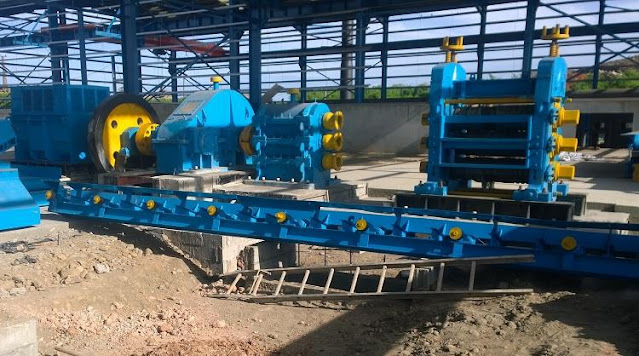What Are The Requirements For Rolling Mills For Lubrication?
Rolling mills requirements for lubrication:
Grease lubrication: such as the input ramp of the furnace in the hot strip mill, the pusher, the discharger, the stand, the stand, the mill ramp, the mill work, the motor bearing, the mill press, the universal joint shaft Grease with bracket, cutting machine, looper, guide, output ramp, tumbling machine, coiler, washing machine, turning machine, shearing machine, disc cutter, edger, boring machine, etc. lubricating;
Lubricating oil adopts circulating lubrication: For example, Baosteel 2030 five-stand cold rolling mill is an example, strip steel cooling and lubricating emulsion system and oil feeding system uncoiler, five machines, feeding hoe, electric motor, rolling shear, guide, Lubrication of steering rollers and coilers, gear oils, leveling machines, etc., oil film bearing systems for each frame. Bearings for high-speed, high-precision rolling mills, lubricated with oil mist and oil and gas.
Let’s talk about it in detail below:
Hot-rolled sheet steel strip mill requirements for grease:
Strip technology is the technology with the highest technical content and the highest added value of products in rolling steel production. In order to improve the shape and surface quality of the rolled products, most of the strip mills use CVC, bending rolls, nip rolls, and other world-class technologies. However, due to the harsh bearing conditions of such rolling mills, the selection of suitable greases is carried out. Lubrication is especially important.
Plate type rolling steel work roll housing high temperature: the billet temperature is above 1200 °C. During the rolling process, the radiant heat and conduction heat can make the work roll housing temperature reach 100 °C or above.
Heavy load: the rolling mill bearing is subject to a large rolling force and impact load, especially due to the joint action of the CVC rolling mill, the nip roller and the bending roller, the rolling force of the rolling mill bearing can be decomposed into the axial force and the radial force. The axial force is mainly caused by the roll (the roll is plus or minus 100 mm), and the radial force is mainly composed of the rolling force and the bending force (the bending force is 120 tons/roll neck).
Multi-water: During the rolling process, a large amount of spray water is required to cool the rolls, and the spray water can easily enter the bearing, especially the lower work rolls.
High speed: The billet has a high rolling speed in the finishing zone, and the wire speed of the F6 frame can be 13m/s. Rolling mill bearings require excellent high-temperature resistance: the thickener of the rolling mill bearing grease has high physical stability, does not melt or decompose at the ambient temperature used; the tendency of the grease to soften at high temperatures is small; Has good thermal reversibility. The lipid drop point should be greater than 250 ° C to ensure that it can be used in high-temperature environments. It also has good pumping performance at lower temperatures and a wider temperature range.
Excellent water resistance: the consistency of the rolling mill bearing grease should not be much lower after it is in contact with water or even mixed with water. It prevents the loss of lubricant and reduces the lubricity, and it still has good protection.
Excellent rust and corrosion resistance: The bearing grease of the rolling mill should be able to maintain good protection and lubricity in the water vapor and dust environment and prolong the life of the bearing.
Good extreme pressure and wear resistance: the rolling mill bearing grease should be able to withstand a large rolling force and impact load, especially under the joint force of CVC rolling mill, nip roller and bending roller, it can form a good oil film thickness.
Please contact stella@hanrm.com for a quotation.
And free send inquiry to us.
Email: stella@hanrm.com stellarollingmill@gmail.com
Whatsapp/Wechat:+8615877652925
.jpg)




















